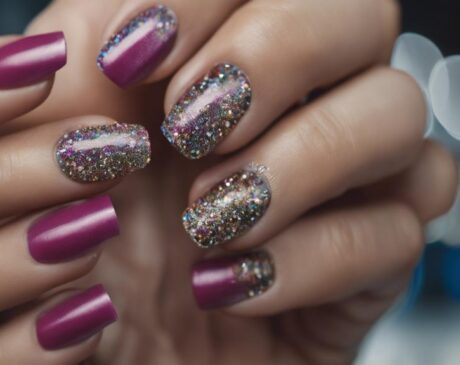Why Is My UV Lamp so Hot on My Nails?
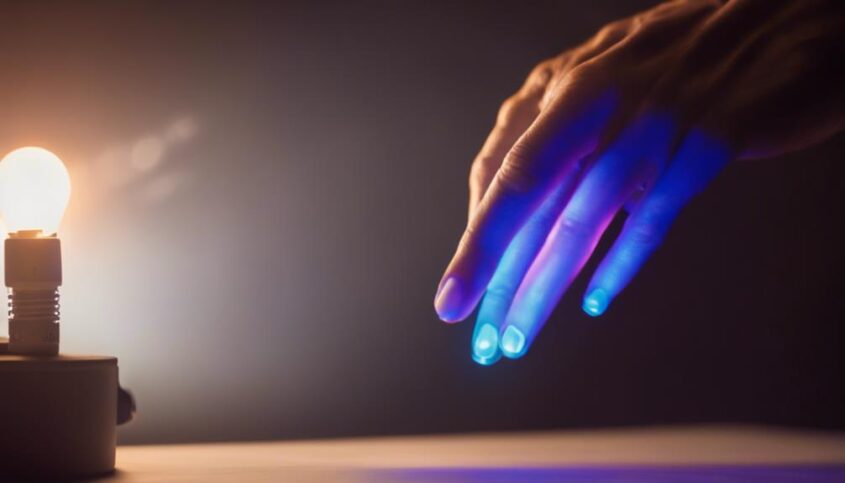
If your UV lamp feels too hot on your nails, it's likely due to the heat produced when curing. The intense heat can be uncomfortable and even harmful. Ensure proper curing times and ventilation to manage the heat. Consider the lamp's wattage and quality, as well as its placement for optimal results. Prevent overheating by using correct methods. Discover more about UV lamps and nail care for a comfortable and effective treatment.
Key Takeaways
- UV lamps generate heat during gel curing.
- Lamp wattage and quality affect temperature.
- Proper placement prevents overheating nails.
- Excessive heat can harm nails and skin.
- Cooling techniques like water soaks help.
Understanding UV Lamps and Heat
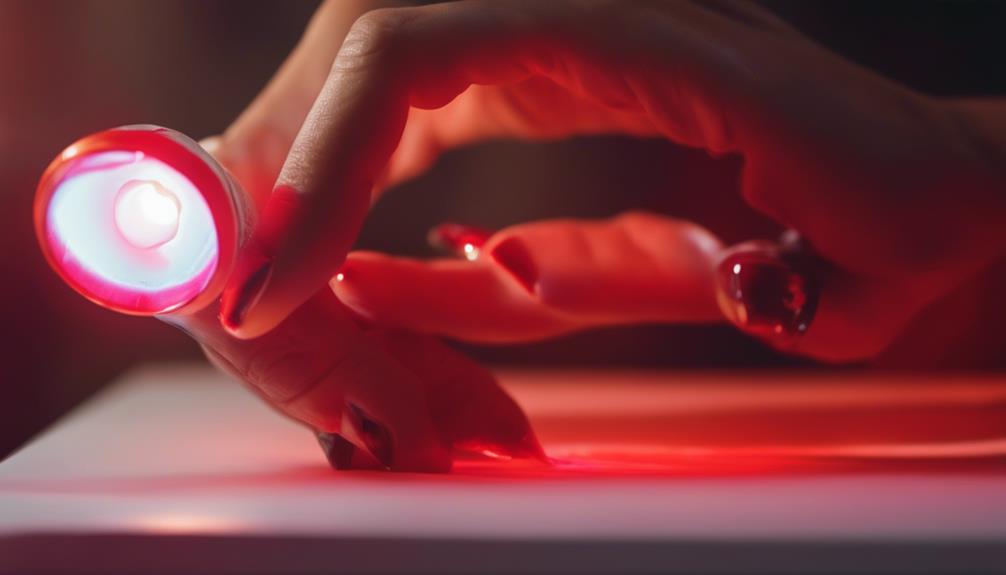
If you've ever wondered why your UV lamp feels so hot on your nails, it's essential to understand the relationship between UV lamps and heat. When you place your nails under the UV lamp, the UV bulbs emit ultraviolet light that reacts with the gel polish, causing it to cure or harden. This curing process generates heat as a byproduct. The heat you feel on your nails is a result of this chemical reaction taking place. While some heat is necessary for the curing process to occur effectively, excessive heat can be uncomfortable or even harmful.
To manage the heat from your UV lamp, ensure you're using the correct curing times recommended for your gel polish. Additionally, make sure your hands aren't too close to the lamp, as this can intensify the heat. Proper ventilation in your workspace can also help dissipate excess heat. By understanding how UV lamps and heat are connected, you can enjoy your nail treatments comfortably and safely.
Factors Affecting Lamp Temperature
Understanding the various factors that influence the temperature of your UV lamp is crucial for optimizing your nail curing process. The main factors affecting the temperature of your UV lamp include the wattage of the lamp, the brand and quality of the lamp, the ambient temperature of the room, and the duration of use.
Higher wattage lamps tend to generate more heat, so if you find your lamp getting too hot, consider switching to a lower wattage option. Additionally, cheaper or lower quality lamps may not have proper heat dissipation mechanisms, leading to increased temperatures.
The ambient temperature of the room can also impact the heat of the lamp. If you're in a hot environment, the lamp will have to work harder to cool itself down. Finally, the duration of use plays a role – extended use without breaks can cause the lamp to heat up excessively.
Importance of Lamp Placement
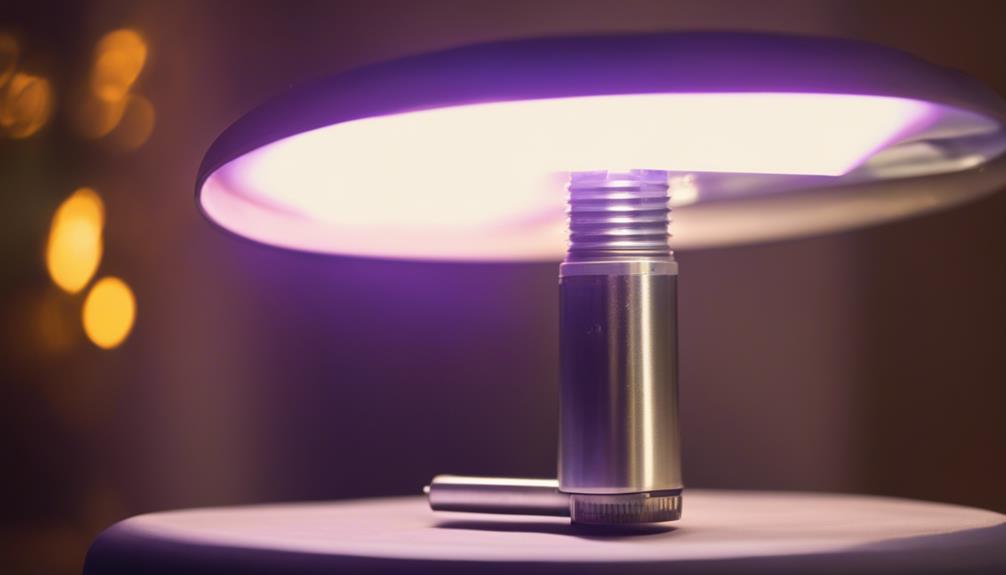
Proper placement of your UV lamp is crucial for ensuring even curing of your nails. When you position the lamp correctly, each nail receives the same amount of UV light, leading to a uniform and durable finish. Placing your nails directly under the lamp's bulbs helps to prevent any areas from being under-cured, which could result in premature chipping or peeling.
To achieve optimal results, ensure that your nails are centered beneath the UV lamp and that the bulbs are at an appropriate distance from your nails. Avoid placing your nails too close to the bulbs, as this can lead to uneven curing and potential discomfort due to excess heat. Similarly, keeping your nails too far from the bulbs may result in insufficient curing, leading to a less durable manicure.
Types of UV Lamp Bulbs
Choosing the right type of UV lamp bulbs is essential for achieving optimal curing results for your nails. There are two main types of UV lamp bulbs commonly used for curing gel nail polishes: UV bulbs and LED bulbs.
UV bulbs emit a broader spectrum of UV light, making them suitable for curing a variety of gel nail products. They tend to be more cost-effective but may require longer curing times.
On the other hand, LED bulbs emit a narrower spectrum of light, making them more efficient and faster at curing gel nail polishes. LED bulbs also have a longer lifespan and are less likely to break compared to UV bulbs.
When selecting UV lamp bulbs, consider the specific gel nail products you'll be using and how quickly you want your nails to cure. Experimenting with different types of bulbs can help you find the best option for achieving salon-quality nails at home.
Effects of Overheating on Nails
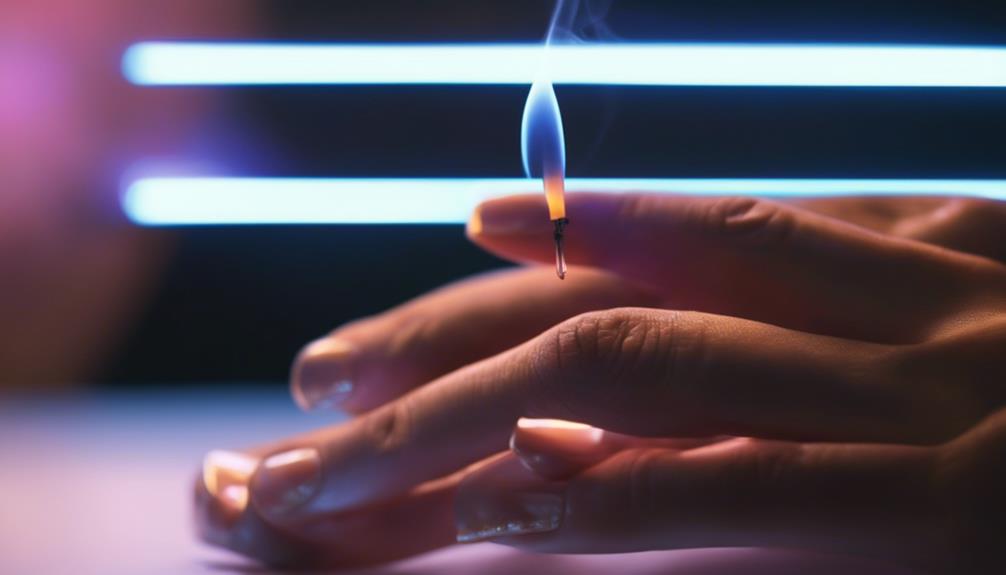
When your nails are exposed to excessive heat from UV lamps, they're at risk of damage such as weakening and brittleness.
Additionally, overheating can cause changes in the color of your nail polish, affecting the overall look of your manicure.
It's essential to address the health implications of overheating on your nails to maintain their strength and appearance.
Nail Damage Risks
Excessive heat from your UV lamp can lead to potential damage to your nails, risking their health and appearance. When your nails are exposed to high temperatures for extended periods, they can become weak, brittle, and prone to breakage. Additionally, overheating can cause the nail plate to dehydrate, leading to dry, peeling nails that lack luster and shine. To maintain the health and strength of your nails, it's essential to use your UV lamp cautiously and ensure that your nails are not subjected to excessive heat. Remember, healthy nails are beautiful nails.
| Nail Damage Risks | Effects | Prevention |
|---|---|---|
| Weak and Brittle Nails | Prone to Breakage | Use UV lamp cautiously |
| Dehydrated Nail Plate | Dry, Peeling Nails | Avoid excessive heat exposure |
| Lack of Luster | Diminished Shine | Keep nails hydrated |
Color Change Concerns
To prevent color changes on your nails due to overheating, ensure that your UV lamp isn't emitting excessive heat during the curing process. When the lamp gets too hot, it can cause your nail polish to change color or even burn. This can be frustrating, especially after spending time on a perfect manicure.
Keep an eye on the temperature of your UV lamp and make sure it stays within the recommended range. If you notice any unusual heat coming from the lamp, stop the curing process immediately. By being proactive and monitoring the heat output, you can avoid unwanted color changes on your nails and keep them looking flawless.
Health Implications Addressed
What health risks do you face when your UV lamp overheats while curing your nails? Overheating your UV lamp during nail curing can lead to various health implications, including potential damage to your nails and skin. Prolonged exposure to excessive heat can cause your nails to become brittle, weak, and prone to breakage. Additionally, overheating can increase the risk of skin damage around your nails, such as redness, irritation, or even burns. It's essential to ensure that your UV lamp operates at the correct temperature to prevent these health issues. Below is a table summarizing the health implications of an overheated UV lamp:
| Health Implications | Description | Tips to Prevent |
|---|---|---|
| Brittle Nails | Nails become weak and prone to breakage | Use the correct curing time |
| Skin Irritation | Redness, irritation, or burns around nails | Limit exposure time |
| Skin Damage | Potential long-term skin damage | Use protective gloves |
Tips for Managing Nail Heat
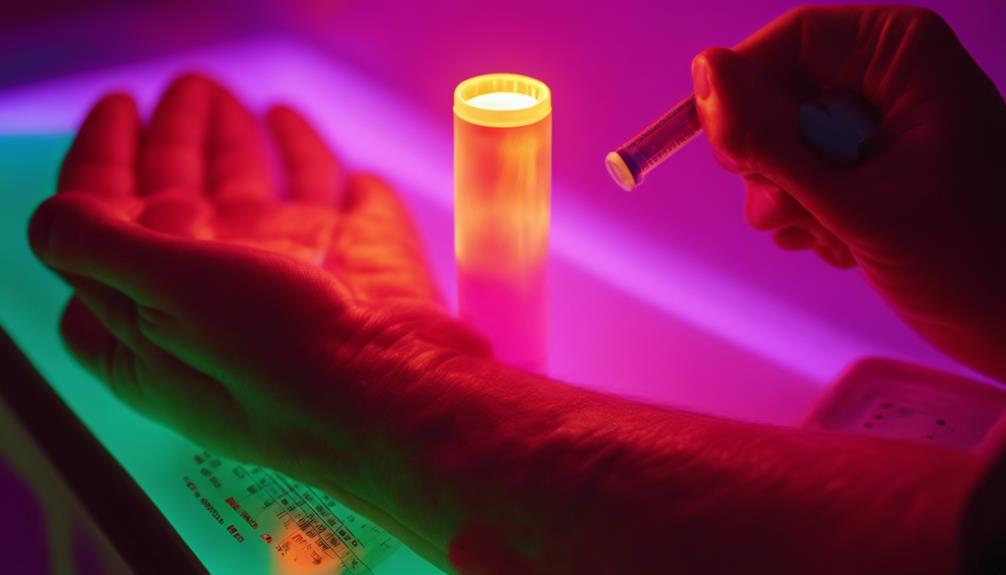
To manage the heat on your nails, try using temperature control techniques like adjusting the UV lamp settings or using a fan during the curing process.
After your nail treatment, remember to cool your nails down by soaking them in cool water or applying a cold compress to prevent any discomfort or potential damage.
Keeping your nails at a comfortable temperature can help maintain their health and ensure a pleasant experience during your manicure sessions.
Temperature Control Techniques
Maintaining optimal nail heat levels can be achieved through simple temperature control techniques. To keep your nails comfortable during UV lamp curing, try using a fan to cool them down. Positioning the lamp further away from your nails can also help reduce heat.
Another trick is to alternate the curing time between hands to give them a break. If you're still feeling too much heat, consider using thinner coats of polish to decrease the amount of heat generated during curing.
Cooling Nail After Treatment
After curing your nails under the UV lamp, consider gently pressing a cool, damp cloth on them to help manage the heat. Here are some tips for managing nail heat:
- Cool Water Soak: Submerge your nails in a bowl of cool water for a few minutes to bring down the temperature.
- Moisturize: Apply a hydrating nail oil or cream to soothe and nourish your nails post-treatment.
- Air Dry: Allow your nails to air dry naturally for a few minutes after curing to let the heat dissipate.
Taking these simple steps can help ensure your nails feel comfortable and look their best after using a UV lamp.
Safety Precautions to Consider
Consider using protective gloves to shield your hands from the heat emitted by the UV lamp when using it for nail treatments. These gloves can provide a barrier between your skin and the intense heat produced by the lamp, ensuring your hands are protected during the curing process. Additionally, make sure to keep the UV lamp at a safe distance from your skin to prevent any potential burns or discomfort.
It is also essential to ensure proper ventilation in the area where you're using the UV lamp. Adequate airflow can help dissipate some of the heat generated by the lamp, creating a more comfortable environment for you during the nail treatment.
Moreover, remember to follow the manufacturer's guidelines and recommendations for safe usage of the UV lamp. These guidelines are designed to help you use the lamp effectively while minimizing any risks associated with prolonged exposure to heat. By adhering to these safety precautions, you can enjoy your nail treatments without worrying about excessive heat from the UV lamp.
Cooling Techniques for UV Lamps
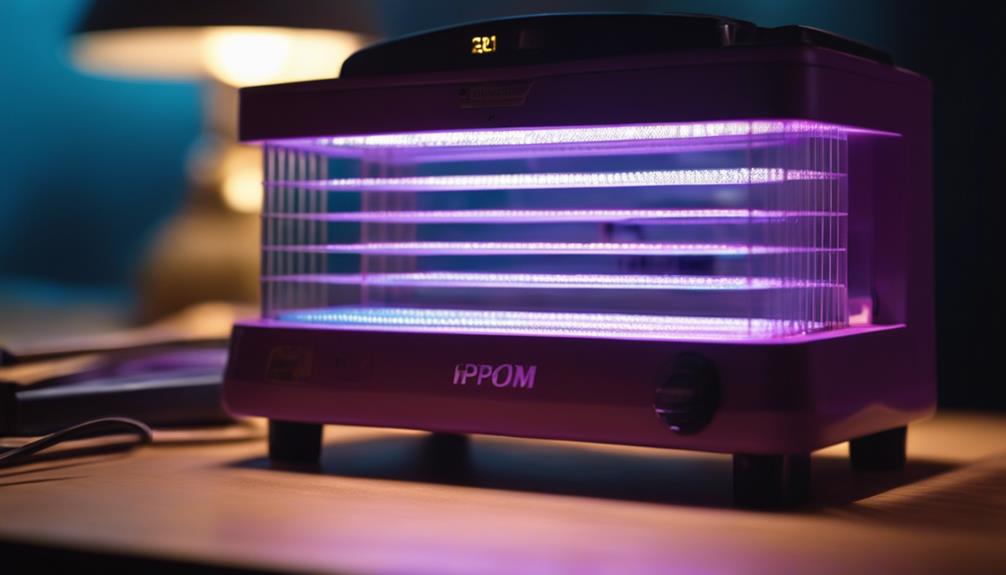
To help manage the heat emitted by your UV lamp during nail treatments, explore effective cooling techniques that can enhance your comfort and safety. Here are three ways to cool down your UV lamp and enjoy a more pleasant experience:
- Use a Small Fan: Position a small fan near your UV lamp to help circulate air and dissipate heat. This simple addition can make a significant difference in reducing the heat felt on your nails during the curing process.
- Cool Gel Packs: Place cool gel packs around the base of your UV lamp. These packs can absorb and disperse some of the heat, providing a cooling effect that can make your nail treatment more comfortable.
- Adjust the Timer: Instead of curing your nails for the full recommended time in one go, try curing them in shorter intervals with breaks in between. This allows the lamp to cool down slightly before the next curing cycle, reducing the overall heat build-up on your nails.
Common Myths About Nail Heat
Don't be misled by misconceptions surrounding nail heat; understanding the common myths can help you better care for your nails during UV lamp treatments. One prevalent myth is that feeling heat during the curing process means your nails are getting damaged. In reality, a slight warmth is normal and indicates the gel is curing.
Another misconception is that using a lower wattage lamp will reduce the heat. The heat produced is more dependent on the curing process than the lamp's wattage.
Some believe that applying thicker layers of gel will generate more heat, but in truth, it's the proper curing time that matters most. Additionally, there's a myth that cooling gels or lotions can prevent heat damage, but they may interfere with the curing process.
Future Innovations in UV Technology
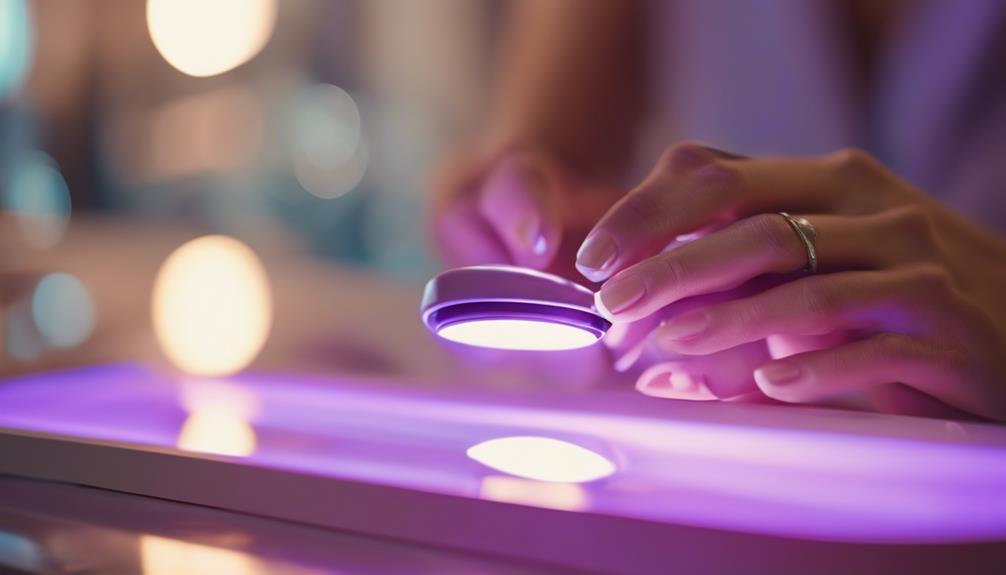
You'll be glad to know that UV technology is advancing rapidly, bringing exciting innovations to nail care.
These advancements promise enhanced performance, making your nail treatments more efficient and effective.
Stay tuned to discover how these developments will revolutionize your nail care routine.
UV Tech Advancements
UV technology continues to evolve rapidly, introducing innovative advancements that promise greater efficiency and effectiveness in various applications. Here are three exciting developments to keep an eye on:
- Smart UV Sensors: Stay ahead with sensors that monitor UV exposure, ensuring you enjoy the sun responsibly.
- UV LED Breakthroughs: Experience quicker curing times and longer-lasting UV LED lights for your nails.
- Portable UV Sterilizers: Keep things clean on the go with compact, powerful UV sterilizers for your personal items.
These advancements not only offer convenience but also empower you to make informed choices when it comes to UV technology. Stay tuned for more exciting updates in the UV tech world!
Enhanced Nail Care
Discover how upcoming innovations in UV technology will revolutionize nail care, providing unprecedented benefits for your manicure routine.
Imagine a world where your nails dry faster, last longer, and shine brighter than ever before. With advancements in UV technology, you can expect quicker curing times, improved durability, and enhanced nail art possibilities.
Say goodbye to waiting around for your nails to dry and hello to a flawless manicure in minutes. These innovations will give you the freedom to express yourself through your nails without the hassle of constant touch-ups.
Embrace the future of nail care with confidence, knowing that UV technology is working hard to elevate your manicure experience to new heights.
Frequently Asked Questions
Can Using a UV Lamp for Curing Nails Cause Any Long-Term Damage to My Nails?
Using a UV lamp for curing nails may potentially cause long-term damage to your nails if not used properly. It's crucial to follow instructions, limit exposure, and consider protective measures to maintain nail health.
Are There Any Specific Nail Polish Brands or Products That Are Known to Generate More Heat When Cured Under a UV Lamp?
When you're selecting nail polish brands for your UV lamp, keep an eye out for gel polishes labeled as low heat. Look for options with formulations that are designed to cure efficiently without generating excessive heat during the process.
Is It Safe to Use a UV Lamp for Curing Nails if I Have Sensitive Skin or Allergies?
If you have sensitive skin or allergies, using a UV lamp for curing nails might not be safe. Pay attention to how your skin reacts and consider alternatives like LED lamps, which tend to be gentler.
Can Prolonged Exposure to UV Lamp Heat Lead to Any Health Risks or Skin Conditions?
Prolonged exposure to UV lamp heat can potentially lead to skin conditions like burns or premature aging. It's crucial to monitor your exposure time and protect your skin. Remember, safety first!
Are There Any Alternative Methods or Products Available for Curing Nails That Do Not Involve Using a UV Lamp?
Looking for nail curing options that skip the UV lamp? Try LED lamps or air-drying polishes. LED lights cure faster and are cooler. Air-drying polishes are UV-free. Both choices offer alternatives to traditional UV lamps for nail treatments.

